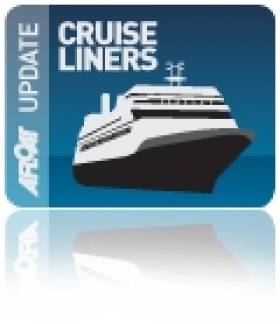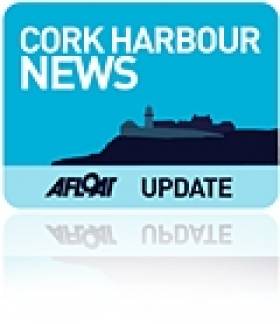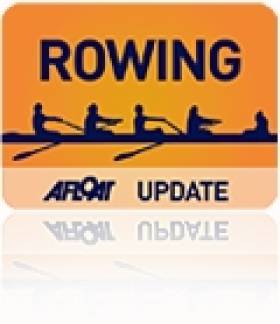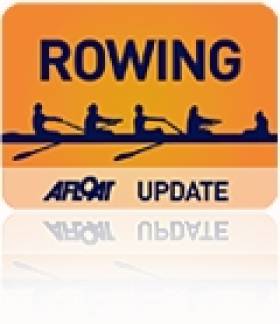Displaying items by tag: Queen
Port of Cork to Mark Maiden Arrival of MV Queen Elizabeth
On Saturday 10th September 2011, MV Queen Elizabeth will make her maiden call to Cobh in the Port of Cork. To coincide with this visit the Port of Cork will formally present a plaque to the Captain of the Queen Elizabeth on the quayside at 10.30am.
This will be followed by a Lusitania Memorial Service led by the Captain and Chairman of the Port of Cork at the memorial in Cobh Town.
Saturday 10th September 2011
0900hrs - MV Queen Elizabeth arrives in Cobh
1045hrs – Plaque exchange with Port of Cork and Cunard
1115hrs – Lusitania Memorial Service Begins in the centre of Cobh Town
1145hrs – Memorial Service Ends
1145hrs – 1245hrs – Band 1 Southern Brigade will play in the promenade in Cobh
Rare Royal Sailing Art to be Auctioned
A rare sailing painting of the Visit of Queen Victoria's visit to Cork Harbour by George Mounsey is to be auctioned at an Irish auction next Wednesday. The Woodward's auction will offer a number of items but the sailing art depicting the Queen and Prince Albert on board the royal yacht in August 1849 is one of few records of the event. It is estimated the painting will fetch between €20,000-30,000. With the probability of the first visit to Ireland by HRH Queen Elizabeth, the context of the above visit to Cork in 1849 is worth examining according to the auctioneer.
Last of National Rowing Heads takes place in Belfast Today
There are 148 crews over the three races starting with pairs and sculls, then doubles and fours and finishing in the afternoon with eights and quads. The third race features 35 eights and 26 quads.
The big race of the day, the men's senior eights, which starts at 3.45 pm, will feature a high intensity race between the two Queen's University eights. The A Queen's crew, with new strokeman, Mike Ewing, have been relatively the same crew for the last three years. This is the crew which mounted serious challenges to the victorious NUIG team at the Irish Rowing Championships, narrowly missing out on a national senior eight by a mere few feet on two occasions. The A team's Ewing won a Wyfold cup (men's coxless four) at Henley last year.
The women's intermediate eights should prove interesting with a crew entered from St Andrews in Scotland who will be up against Queen's University Ladies and St Michael's, Limerick.
The men's junior 16 eights sees all the Ulster crews up against each other whilst the men's junior 18 quads sees Blackrock College, Dublin, Shandon ,Limerick and Offaly Rowing Club take on the Ulster schools.
Eight crews will contest the men's Master's pennant (over 28s) with Galway, Bann and Athlone pushing the Belfast-based masters crews, Belfast Boat Club, Belfast Rowing Club and the Lady Victoria Boat Club, all the way. The former Queen's ladies rower ,Frenchwoman Solange Garrais is bringing a men's Masters and a women's Masters quad from Aviron Grenoblois, France to compete.
The 10.45 am and 13.15 pm races start at the Albert Bridge in Belfast and finish at Queen's boathouse at Stranmillis. The 15.45 pm race starts at the Odyssey building in Belfast Harbour and finishes at Queen's boathouse at Stranmillis. There are viewing points along the full length of each race.
The official start to the regatta season takes place on Saturday 2nd April with the Neptune regatta at Islandbridge, Dublin.
Click this link for Irish Rowing detailsClick this link for the Latest Rowing News
Queen's and Portora Impress at Erne Head
Two men’s senior eights from Queen's University slotted into the first two slots at the Erne Rowing Head of the River at Enniskillen. The junior 18 quadruple of the host club, Portora, had a fine result, finishing joint eighth overall.
Erne Head of the River, Enniskillen
Overall: 1 Queen’s A men’s senior eight 19 minutes 53 seconds, 2 Queen’s B men’s senior eight 20:21, 3 University of Limerick/St Michael’s men’s senior eight 20:40, 4 Trinity men’s intermediate eight 20:59, 5 Bann men’s junior 18 eight 21:09, 6 Methodist College, Belfast men’s junior 18 eight 21:47.
Men, Eight – Senior: 1 Queen’s A 19:53, 2 Queen’s B 20:21, 3 University of Limerick/St Michael’s 20:40. Intermediate: Trinity 20:59. Novice: 1 Trinity 21:47, 2 Queen’s 22:38, 3 Queen’s B 24:51. Junior 18: 1 Bann 21:09, 2 Methody 21:47, 3 St Joseph’s 22:02. Junior 16: St Joseph’s 23:50. Masters: Belfast BC (E) 24:06.
Four/Quadruple Sculls – Senior: 1 Belfast RC (quadruple) 23:01, 2 LSC (quad) 24:45. Intermediate: 1 Trinity (quad) 22:17, 2 Queen’s (coxed four) 23:39, 3 University of Limerick (quad) 23:59. Junior 18: 1 Portora (quadruple) 22:02, 2 Commercial (quad) 22:51, 3 Portora (coxed four) 22:56. Junior 16: Bann (quad, coxed) 24:05.
Women, Eight – Senior: 1 Trinity 23:42, 2 NUIG 23:51. Intermediate: 1 Queen’s 23:45, 2 Trinity 26:02, 3 Methody 26:16. Novice: 1 Queen’s 25:07, 2 Trinity A 26:29, 3 Trinity B 26:40. Junior 18: 1 St Michael’s 24:41, 2 Portora A 27:24. Masters: Belfast BC (D) 25:39
Four/Quadruple – Senior: 1 Portora (quadruple) 24:32, 2 Trinity (coxed four) 27:28, 3 Garda 28:11.
Click this link for Irish Rowing detailsClick this link for the Latest Rowing News



























































